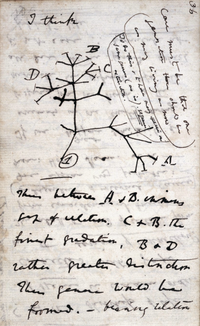
Photo from wikipedia
Abstract Identification of partial sweeps, which include both hard and soft sweeps that have not currently reached fixation, provides crucial information about ongoing evolutionary responses. To this end, we introduce… Click to show full abstract
Abstract Identification of partial sweeps, which include both hard and soft sweeps that have not currently reached fixation, provides crucial information about ongoing evolutionary responses. To this end, we introduce partialS/HIC, a deep learning method to discover selective sweeps from population genomic data. partialS/HIC uses a convolutional neural network for image processing, which is trained with a large suite of summary statistics derived from coalescent simulations incorporating population-specific history, to distinguish between completed versus partial sweeps, hard versus soft sweeps, and regions directly affected by selection versus those merely linked to nearby selective sweeps. We perform several simulation experiments under various demographic scenarios to demonstrate partialS/HIC’s performance, which exhibits excellent resolution for detecting partial sweeps. We also apply our classifier to whole genomes from eight mosquito populations sampled across sub-Saharan Africa by the Anopheles gambiae 1000 Genomes Consortium, elucidating both continent-wide patterns as well as sweeps unique to specific geographic regions. These populations have experienced intense insecticide exposure over the past two decades, and we observe a strong overrepresentation of sweeps at insecticide resistance loci. Our analysis thus provides a list of candidate adaptive loci that may be relevant to mosquito control efforts. More broadly, our supervised machine learning approach introduces a method to distinguish between completed and partial sweeps, as well as between hard and soft sweeps, under a variety of demographic scenarios. As whole-genome data rapidly accumulate for a greater diversity of organisms, partialS/HIC addresses an increasing demand for useful selection scan tools that can track in-progress evolutionary dynamics.
Journal Title: Molecular Biology and Evolution
Year Published: 2020
Link to full text (if available)
Share on Social Media: Sign Up to like & get
recommendations!